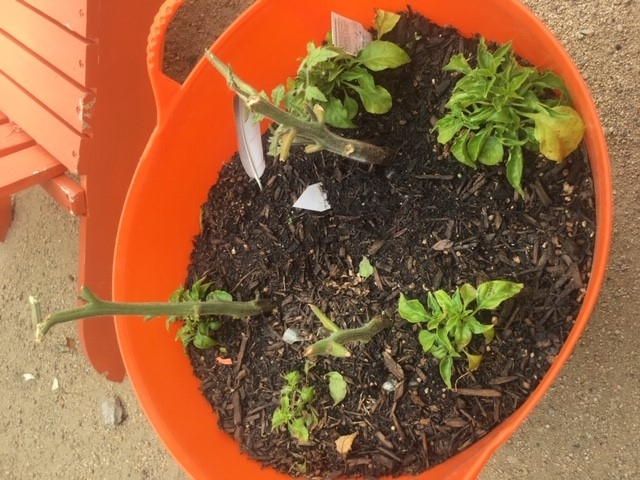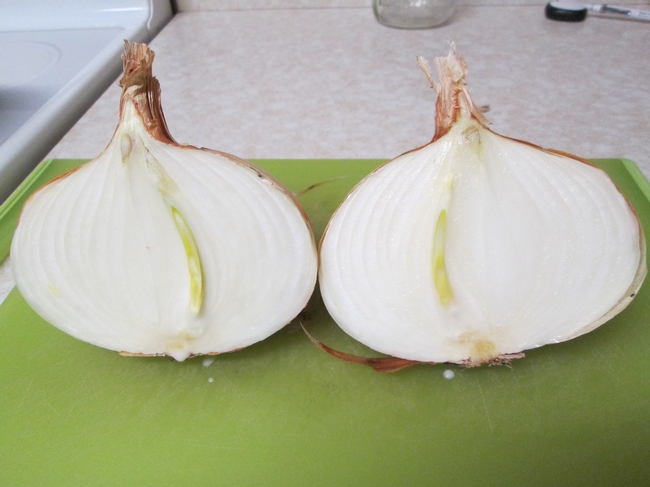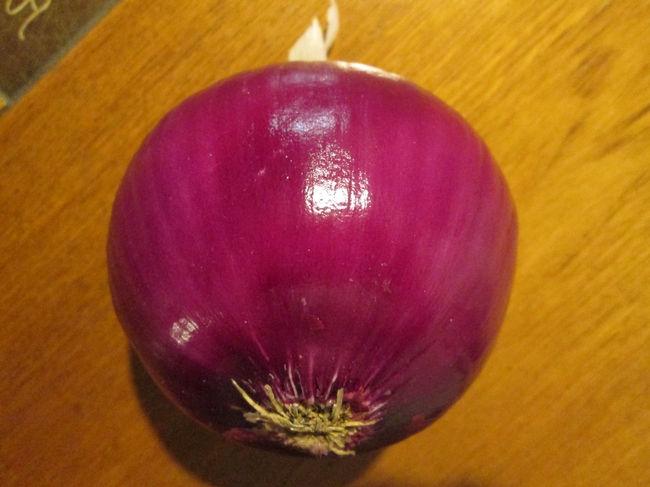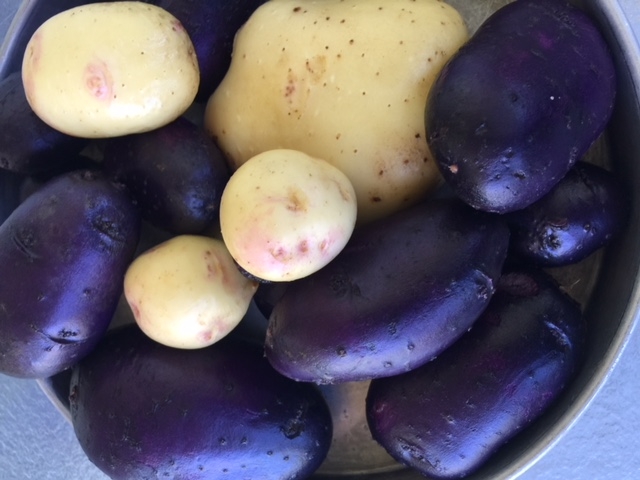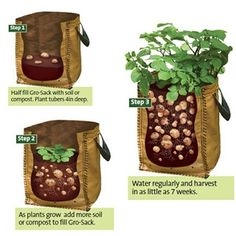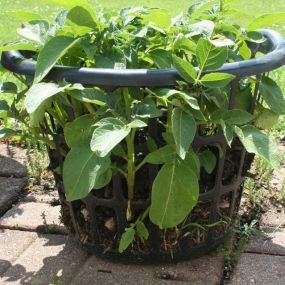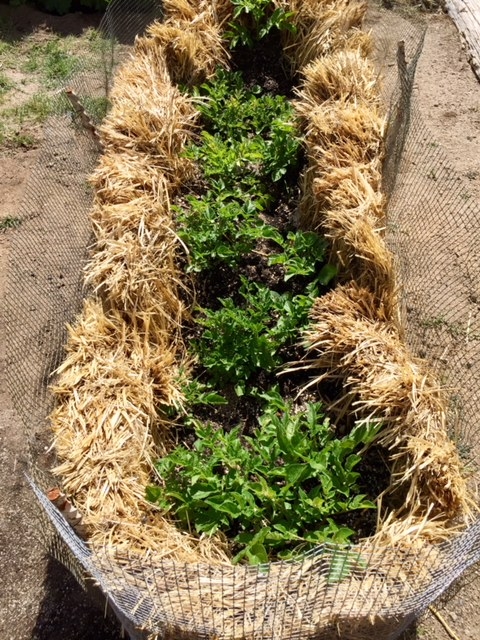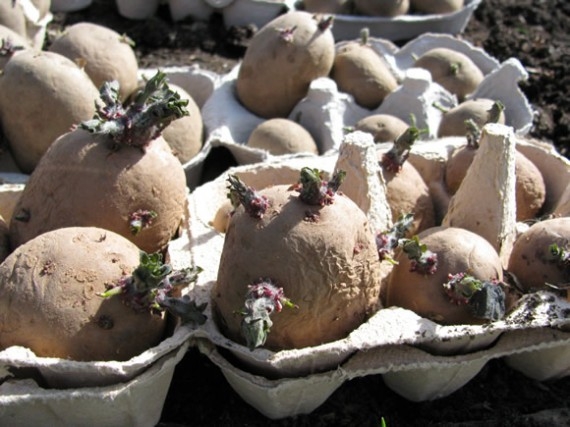- Author: Amy Weurdig
It's been awhile since I attempted gardening any kinds of vegetables out in the Mesa after the initial year of failures.
I thought hard about putting in raised beds closer to the house, maybe putting in a pest deterrent fence around it.
I've had some fun and a lot of success having my garden at the Bishop Community Garden, so why would I want to garden at home? Well, it'd be great to just pick what I needed for the meal right then, rather than planning on it ahead of time and driving the 11 miles into town. Not very eco-friendly to keep driving back and forth to get a tomato!
So this year, we had some left over tomato starts and I acquired a six pack of habanero peppers that I decide to try out in a trug – you know one of those rubbery garden buckets. The idea being that the trug would elevate the plants enough that the critters couldn't reach them – like a raised bed.
Fast forward 3 weeks: the plants looked pretty good. Had some crazy windy, cold, rainy weather for a couple weeks,but the plants still looked good. Then one evening I went out to water and found stumps.
All my plants were stumps. Cleanly eaten with no evidence at all other than the stumps.
So, my test showed that if I should do raised beds, they need to be at least 3' feet off the ground, enclosed in a wire cage, in order to see any fruits of my labor.
Here is the moral of my story: I'll keep my plot at the Community Garden where I get to see my friends, pull weeds, and pick my veggies free of pepper-eating varmints.
- Author: Alison Collin
Cultural Requirements.
Onions need full sun and prefer a loose, rich, well-drained soil. They are very shallow rooted so need regular irrigation to avoid drying out, and benefit from careful mulching. They do not perform well if they are crowded or have to compete with weeds.
Growing from Seed
This is an economical way to grow onions and gives a chance for several different varieties to be compared. Onions may be sown directly into the ground early in the year for intermediate day varieties, or in fall for short day types. Sow in rows ¼” deep and 15” apart. They should be gradually thinned until they are about 4”-6” apart - the thinnings can be used as green onions or may be transplanted.
For intermediate day onions I have a much greater success sowing indoors in cell packs in mid-January. I harden them off (outside in a protected place during the day, but in at night) ready to plant them out as tiny plants once they have two true leaves which is about one month after sowing. I put one seed per cell so that there is little disturbance to the plants when I plant them out.
I have also used cardboard fruit boxes such as tangerines come in, filled with seed compost and placed on a tray. The box usually lasts for about one month by which time the cardboard is on the point of disintegrating which makes removing the little transplants easy.
Commercially grown transplants
These are an easy way to grow onions if seed-starting is not possible. Many catalogs now carry Intermediate day onions as small plants, and even sell them in mixed bunches of red, yellow and white varieties as a convenience. They have their roots and tops trimmed, and depending on the company may have been lifted some time before they arrive so they may be rather dried out. Also some companies don't send them out very early in the season to zone 7 – a point worth checking.
They are comparatively expensive and come in large bundles of about 50-70 plants which is generally more than I need so it may help to find someone willing to share an order.
Onion Sets
These are tiny onion bulbs which are grown the previous season in crowded conditions to keep them under-developed and are then lifted and dried. They appear in net bags and are usually just labeled “white” or “yellow” with no varietal name and are most often long-day types. My experience with trying to grow these is that they bolt very readily or just grow foliage and some very small bulbs. In this area they are usually planted in the fall, but are often already woody in the middle before they are lifted. They may be planted to provide a supply of green onions, and can be planted close together for this purpose.
My experience has been with using drip irrigation with ½ pipes and emitters every 1 foot and this I bury about just under the surface. During the recent drought years I have planted a row on either side of the pipe with those plants on one side about 2” to the left of an emitter, and the ones on the other side about 2” to the right so that they were checkerboarded and the plants were about 4”-5”away from each other. If growing with soaker hoses or overhead irrigation they can be planted about 4” apart depending on the cultivar. Closer spacing will give smaller onions.
One month after planting I mulch the growing plants to conserve moisture and prevent sunscald of the developing bulbs, and then just leave them to grow.
I have good, regularly amended soil so I fertilize only a couple of times using a general liquid fertilizer early in the growing season (March and May). If growing sweet onions avoid using fertilizers containing sulfur. It is important not to fertilize once bulbing has begun. The areas between the plantings remained dry because of lack of water, and very few weeds appeared through the mulch but these were removed when small to avoid disturbing the onion roots.
As the foliage grows take care not to break or bend it at the neck as this will inhibit nutrition from the foliage reaching the bulb.
Harvesting and Curing.
When the bulbs have grown to full size, usually around early August for intermediate-day varieties, the foliage begins to turn brown and bend over at the necks. At that point I remove the mulch, reduce the irrigation, and as the onions dry I disconnect the irrigation pipe completely. When the foliage is dry I lift the onions very carefully so as not to damage them or tear off the drying skins. They have usually grown so that the bulb is almost sitting on top of the soil. Then the onions are traditionally laid out on the soil surface to dry, with the foliage of one plant laid over the next to prevent sunburn. However, I have found that since this is often at the hottest time of year in our area, they tend to get sun damage anyway, so I have found that using an old mesh window screen supported on a couple of saw horses and placed away from strong, direct sunlight often gives better results.
Once the necks are completely dry, and the outer skins papery, the onions may be placed in mesh bags, or if suitable braided and stored in a cool, airy place. (Unfortunately, almost an impossibility here in the height of summer). I use a spare bedroom for the hotter months before transferring to the garage once the outside temperature cools off. Inspect for softening or rotting and remove those that are affected immediately; use any with thick or soft necks first.
Pests and Diseases.
I grew onions without any noticeable problems for a few years, but two years ago I began to get thrips infestations which affect onions grown in dry conditions, and appeared in July. The foliage became streaky and slightly grayish and sticky. Insecticidal soap has proved effective in controlling this pest, which is not so likely to occur where onions have sprinkler irrigation. Damage to the crop was not severe since by that time the bulbs were well formed.
Onion pink root is a fungal disease and can be devastating. So far I have never seen any evidence of it in my crops.
For other pests and disease symptoms check the California Master Gardener Handbook.
Bolting
Bolting, or sending up a premature flower spike during the first year of growth, is often the result of a sudden change in temperature, irregular irrigation or other stress. Some varieties are more prone to bolting than others, so check for this when choosing varieties. If a flower spike emerges, snip off the top of the stem, and use that onion quickly because it will not store. The center of the bulb may be woody, but the rest is still usable.
Yields vary but in 2016 I grew one 17' row of Candy from seed started early indoors and planted out as tiny plants in mid-February - a total of 35 plants which yielded just under 31lbs of onions, the largest being 1lb 6¾oz, and the smallest 9 oz. They stored through mid-December.
However another Master Gardener in a nearby neighborhood grew Candy from commercial transplants planted out on March 29 as part of a comprehensive trial of onions in 2014. She grew 30 plants of Candy yet the yield of those was only 11lbs 9oz, and they grew to only 2.5” in diameter.
Resources
http://ucanr.edu/blogs/blogcore/postdetail.cfm?postnum=16873 (Bishop trial of 9 different varieties)
http://www.dixondalefarms.com/learn
http://www.rodalesorganiclife.com/garden/onions-growing-guide
http://ucanr.edu/blogs/blogcore/postdetail.cfm?postnum=19933 Fall planted onions in Bishop
http://ucanr.edu/blogs/blogcore/postdetail.cfm?postnum=21030
- Author: Alison Collin
Onions (Allium cepa) are biennial members of the Amaryllidaceae family and Allium genus which also includes leeks, garlic and chives and shallots. They are an important food crop worldwide, and feature in the cuisine of many different cultures.
Numerous varieties of onions are available. Most are easily grown, but not all varieties make good bulbs at this latitude so it pays to understand the specific requirements in order to meet with success and not to waste time, money and effort planting varieties which are not likely to do well.
The most important criteria for growing onions is the length of daylight available. This is called photoperiodism.
Onions grow foliage during the cooler weather – each leaf representing one layer in the bulb - until a specific daylight length is reached. Once this point has occurred, foliage growth stops and bulb formation begins, so the larger and stronger the plant is at that point the bigger the mature onion will be. If you plant the wrong type at the wrong time they will grow tops but not produce onions, or will simply bolt and flower.
They are divided into the following groups:
- Short day onions bulb up when the daylight length reaches 10-12 hours. (Note: This is in spring, and NOT when the days are getting shorter)! These are best started in the fall or early winter so that they can bulb up early the following year – they will be ready to use around late May -July. They are hardy, and overwinter well, although one has to remember to maintain irrigation and not let them dry out at any time. These are generally the sweeter flavored onions and do not store well.
- Intermediate day onions which are not so temperamental and will bulb when the light length is about 12-14 hours. In this area, if seed is started early in the year (January), or transplants are planted out in February they will have several months in which to grow into good sized plants by the time bulb production begins. This will enable them to develop quite large bulbs which can then be dried and stored by the end of August/September.
- Long day onions that require 14-16 hours of daylight in order to bulb up. These grow well in the north of the USA but do not do well in this area. In general, they are the more pungent varieties and tend to be the better keepers. An exception to this are the Walla Walla onions which although technically they are long day onions can be grown in intermediate day areas with good light since they mature early. These are very sweet onions and do not store well.
Onions can also be further divided by color of their skins -- yellow, white or red, or by their taste -- sweet, pungent, or mild. Each daylight length group contains a variety of these possibilities. Some store well, while others only keep for a limited amount of time.
Mature bulbs vary in shape and size conical, round, flattened disc, and some, such as the Cippolini types, only grow to 2”, while some aficionados attempt to grow individual onions weighing over 10lbs!
The Egyptian "walking onions" (Allium × proliferum) make clumps of bulbs at their bases which are rather pungent. Clumps, which are more generally eaten, also appear on the end of stalks in place of flowers. If left, these flower stems bend over and the bulblets will root when they reach the ground. This is why they are called walking onions.
Onions germinate and grow easily from seed. January is a good time to sow intermediate-day onions inside, or alternatively, transplants become available a little later. These often come in large bundles of single varieties which makes it difficult to try several different varieties in the garden unless one has a lot of space.
I have had good luck growing the variety 'Candy' but although they had a very good yield and flavor, they did not store well. It was disheartening to find their middles softening before I had used them all. Recently I have grown 'Zoey' as a good storing yellow onion, but they may be rather large for some people -- many weighing in at nearly 2lbs. each! For red onions I like 'Monastrell', a slightly flattened onion with a good flavor, beautiful color, and excellent keeping ability. I harvested both these varieties at the end of August last year, and am still finding them in excellent condition as I am about to sow a new crop.
A onion problem diagnosis chart can be found at the bottom of this document.
Onions are a great crop in our area and are certainly worth growing.
- Author: Alison Collin
In the constant search for green leafy vegetables that will do well in a hot climate I stumbled upon Brazilian Spinach (Alternanthera sissoo) and Okinawa Spinach (Gynura crepioides), and although a tropical plants I decided to give them a try in our dry high desert climate.
Brazilian Spinach: This plant forms a mat of bright green, crinkled leaves on stems about 1' long which flop and root wherever nodes touch the ground. It prefers part shade, and in many places it is grown as living mulch under fruit trees. It is not fussy about soil type, but does require warm temperatures, a fairly steady supply of water, plenty of organic matter and lots of nitrogen since it is a fast grower.
I acquired a couple of rooted pieces and planted them in pots indoors. They very quickly became established and once all danger of frost was past I planted one directly into the garden and the other remained in its pot but was also placed outside. The potted one grew vigorously all summer far outperforming the specimen that had been directly planted, and at the end of the year I once again brought it inside where it served as an edible houseplant. They may do well in planters with plenty of irrigation and shade from afternoon sun.
The leaves are crisp and mild and can be eaten raw in salads or added to other dishes, but if large quantities are to be consumed it is recommended that they first be cooked and strained because of the high levels of oxalate that they contain.
I found that the leaves are a little coarser than leaf lettuce and while not unpleasant they do not have a lot of flavor. I used them as an “emergency” lettuce when making sandwiches, and I certainly preferred them to Malabar spinach which I grew in previous years.
Okinawa Spinach: Is an attractive low-growing plant with purple tinged leaves. The cultural requirements are similar to Brazilian spinach. It can be eaten raw or cooked and young shoots are often used in stir fries or tempura dishes in Okinawa. It has a slightly nutty flavor with hints of pine in the younger shoots. If overcooked it has a tendency to become slimy.
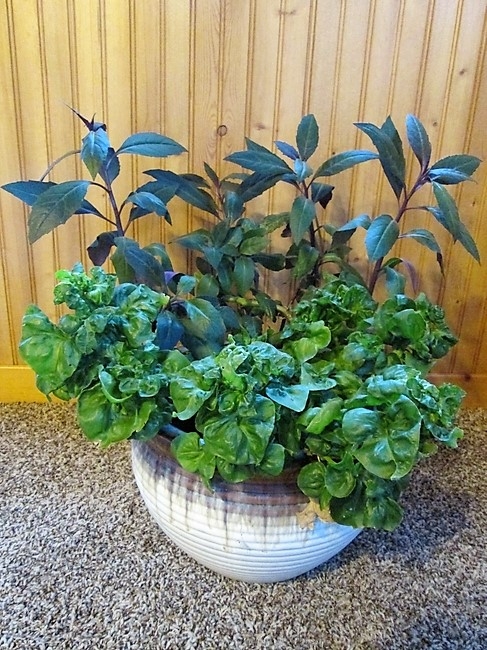
- Author: Bobbie Stryffeler
| Ed. Note: Potatoes grow well in the Eastern Sierra. Usually we grow them in the ground, but some gardeners have alkaline soil or no soil at all! Gardeners like to try new things and this article has some fun ideas to try. You can find some UC info on potatoes here. Mention of products does not constitute endorsement. |
I told a friend I built a potato pen and they asked if I had a problem with my potatoes escaping the garden…well no, they don't escape but if they try I have it covered.
Truth is the potato is one of my favorite home grown vegetables, but over the years of gardening I hadn't given the process much thought. Last spring, moving my focus from tomatoes to potatoes, I decided to grow more, more variety, with hopes of plenty to enjoy throughout the winter months.
https://www.unwins.co.uk/growing-potatoes-in-potato-growing-bags-how-to-ggid53.html
https://preparednessmama.com/grow-potatoes/
With a little research I found that the potato possibilities are endless! Grown by the acre or container. A mound of dirt, potato sack, wooden spud box, recycled plant containers, a laundry basket, or your own invention, are all suitable options for growing a tasty crop of taters!
Some suggest planting directly in the laundry baskets or cages. In dry regions like the Owens Valley it might be better to line the inside of the basket, cage, or pen with straw or newspaper to maintain soil structure and also create a ventilated barrier that retains some moisture and keeps the tubers cool. It is also important to note that potatoes that are exposed to light rapidly become green and poisonous.
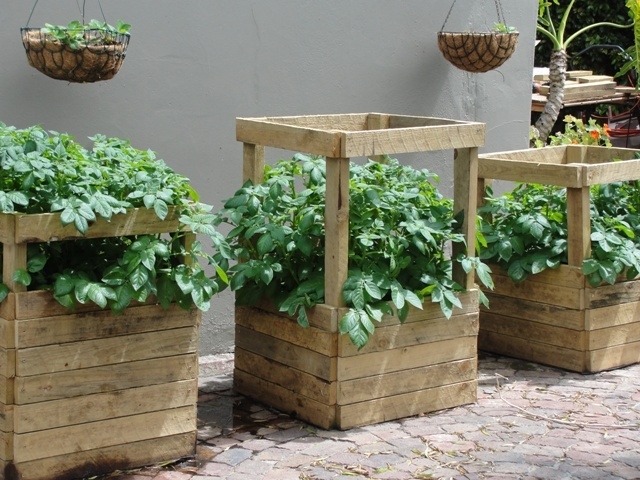
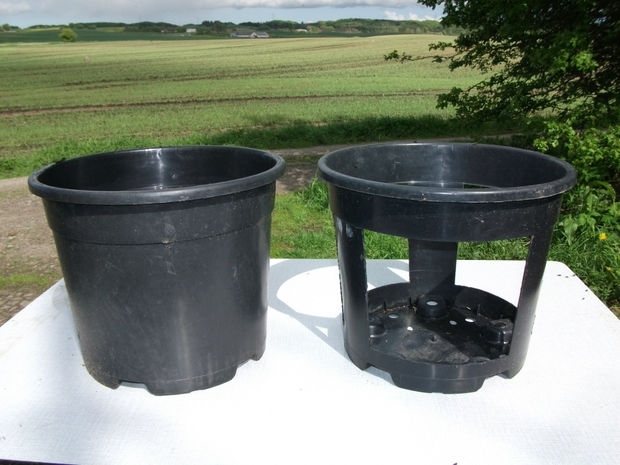
Some common characteristics of these containers are depth (no digging just filling), well-drained, and ventilation to reduce chance of rotting seed potatoes. The biggest challenge in container planting is keeping the soil cool where a garden bed or larger space can maintain a more constant cool temperature.
Meet my invention, the Potato Pen (left). I wanted a minimal investment and these materials were extras from my garden shed. I didn't want to worry about the weed covered surface so I lined the floor of the pen with newspapers and cardboard. The chicken wire sidewalls were lined with a thick layer of straw to retain some moisture and keep the tubers cool. The pen provided depth for growth, room to add soil as the plants grew, supplying the root system with room for an abundant crop.
I first let the potatoes sprout in an open egg carton, cutting the larger potatoes in half or more. This also allowed for the cut potatoes to dry, reducing the chance of rotting. This process is called “chitting” your potatoes. It is thought that this encourages faster growth and an increased crop.
The sprouted seed potatoes were then started in about four inches of soil with sprouts facing up. As the sprouts grew I added more soil. The straw was probably not the best idea as it became a mega condo project for every earwig in my yard. At night they devoured my potato plant leaves. I filled shallow plastic cups with water and a splash of fish oil and strategically placed them around the potato plants. I was amazed at the numbers filling the cups overnight.
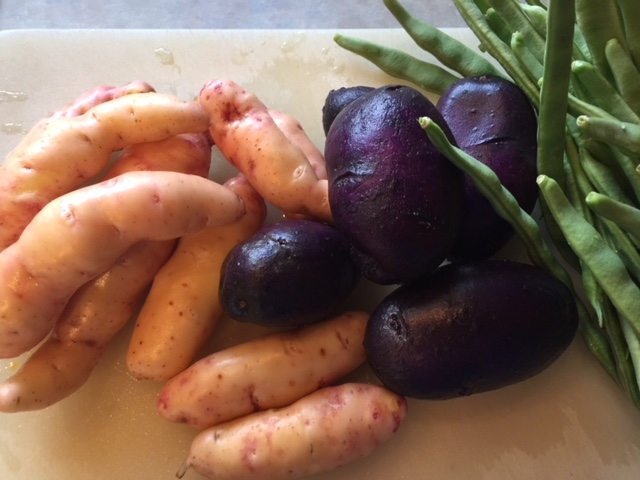
Overall the potato pen worked well. At season-end it was filled with an abundant crop of potatoes. Originally, I had planned on removing the stakes, pulling down the sidewalls of chicken wire and straw and harvesting all the potatoes at once, but I soon realized there were too many potatoes. So many that I left the majority in the cool soil of the potato pen (root cellar).
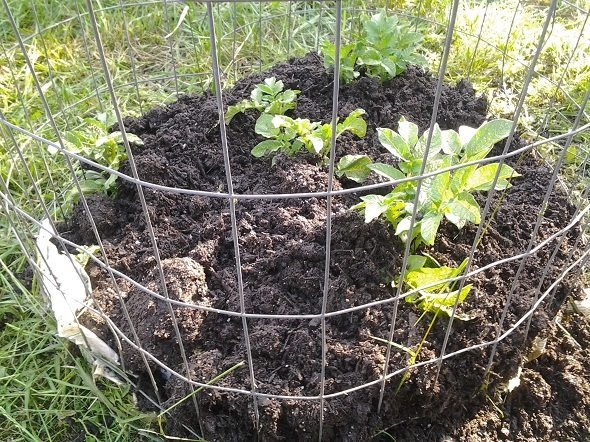
As I said at the start, the potato possibilities are endless. So why not grow your own? It's recommended that you buy your seed potatoes from a reliable source as potatoes are susceptible to disease and virus. Follow a few basic steps and prepare to enjoy the best tasting potatoes yet.
Potatoes are a cool season crop. Plant two or three weeks before the last spring frost or sooner if you plan to protect the plants. They can survive freeze damage but will most often have a reduced crop. As noted above, let your seed potatoes develop some sprouts before planting. I'm thinking the round cages will be easy to protect against unexpected spring frost.
Regardless of what container or bed you decide to plant them in make sure you use fertile, sandy loam that is well drained. They will grow in most soils but a good soil mix will improve the yield.
The UC Vegetable Research and Information Center provides a great leaflet (Growing Potatoes) that covers varieties, soil preparation, fertilization, planting methods, irrigation, cultivation, pest control, and harvesting. http://vric.ucdavis.edu/pdf/potato_growingpotatoes.pdf
If garden space is limited have some fun and try growing them in the laundry basket. It's cheap, lightweight, and they come in a variety of shapes and sizes. https://preparednessmama.com/grow-potatoes/


